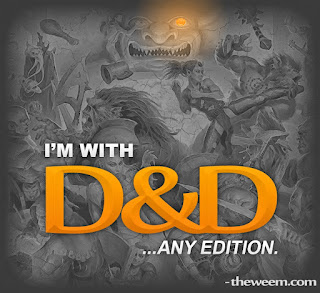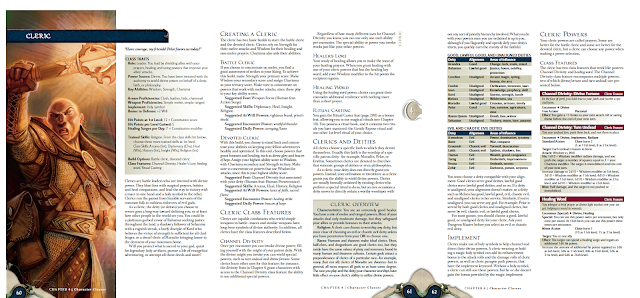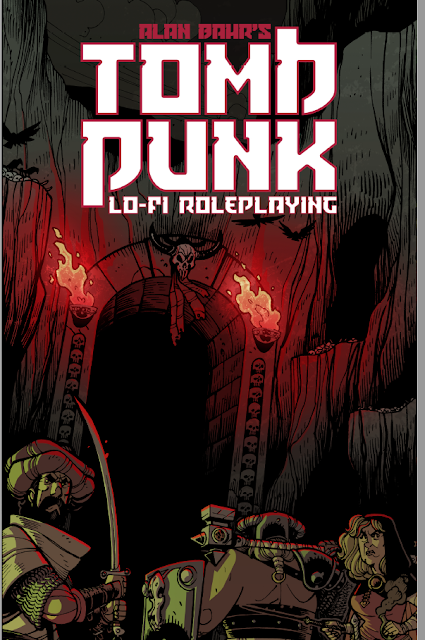now become a widely used shorthand for the literary origins of RPGs." James' site often includes discussions of the Appendix, its influence on the early days of the hobby, and from time to time he even reviews books and authors featured in the Appendix.
Given that he has taken the time to review the Carnelian Cube, a book that fellow Appendix N advocate Erik Mona has found "wanting," it is my hope that James will someday review the Kothar series by Gardner Fox. Though if that doesn't happen I might just find the time to do so. Having endured a couple of Lin Carter's Thongor books, I figure they cannot be much worse. That said, Carter at least has the virtue of being one of the best editors in SF/F history even though his Thongor stories fall very short of the best of Sword and Sorcery fiction.If I were to say that the influence of Appendix N extended beyond the gaming table and that many of the works therein are also seminal works of Science Fiction and Fantasy, I don't think there would be many who disagree. The Appendix includes luminaries like Leigh Brackett, Edgar Rice Burroughs, J.R.R. Tolkien, Manly Wade Wellman, and Robert E. Howard -- and many others beside. But the list is also incomplete as a glimpse into an earlier era of Fantasy, Scientification, and Sword & Sorcery. There is no listing for Clark Ashton Smith, for example.
While Appendix N is the best known Dungeons & Dragons recommended reading list, one that has inspired the DCC roleplaying game and several books, it is not the only list of recommended reading that Dungeons & Dragons games have provided to readers. There are other lists. The Erik Mona edited Pathfinder roleplaying game, or as I call it D&D Golarion, has it's own Appendix 3. This Appendix features a list of recommended reading. It is a longer list than Gygax's, and a good one, that includes a wide range of readings including some more recent works.
My own favorite "Appendix N" is a combination of the "inspirational source material" provided by Tom Moldvay on page B62 of the 1981 Dungeons & Dragons Basic and in the module X2 Castle Amber. Without those two resources, my experience of fantasy would be entirely different than it was. While others may have based their youthful Fantasy purchases on Appendix N, I based mine almost entirely on the Moldvay Basic list. It should be noted that Tom Moldvay was assisted in the creation of his list by Barbara Davis who was Children's Librarian at the Lake Geneva Public Library at the time that D&D Basic was published. Davis eventually became the Library Director from 1984 to 1996. Barbara is no longer with us, and her contribution to D&D and D&D fandom is understudied and underappreciated, but I'd like to thank her for the many hours (years) of joy I experienced due to the list she created. I image her list created joy for many other young people as well.
This isn't to say that no one has discussed the list at all. James Maliszewski has already written a brief comment about how the Moldvay list differs from the Gygax one, and argues that it represents a shift from material that influenced the design of the game to a list that might provide inspiration or entertainment for those who play the game. To quote James, "Whereas Gygax's list was a list of the specific books and authors who influenced him in creating the game -- and are thus a window into how he saw the game -- Moldvay's list is a generalized quasi-academic survey of fiction and non-fiction that might hold some interest to players of D&D."
His language is strong, and as much as he demurs from the quote being used as a "this list is better than the other list" statement, it seems clear to me that the use of the term "quasi-academic" is somewhat loaded.
Let's just say that James and I hold similar, but not exact positions on the lists. I agree that the Gygax list is a specific list that influenced him in creating the game. I think the list was also one which he thought would appeal to people who were currently playing D&D. That is to say, adults. When AD&D was first published, the game was just beginning to escape from college campuses and niche SF/F reading circles and into the mainstream. The Moldvay list, on the other hand, was written for a generation of emerging players. It was written for the young. It was written for me.
Both lists include some overlap -- Fritz Leiber, Robert Howard, H.P. Lovecraft, and J.R.R. Tolkien. Moldvay's list differs in one very distinct way. It is divided into many sections and these sections lead down a wide variety of learning paths, all of which can inform your playing experience.
There is the "Fiction: Young Adult" section , which includes Lloyd Alexander, L Frank Baum, and Ursula Le Guin. What a range of stories!
There is a "Non-Fiction: Young Adult" section, which includes Olivia Coolidge's Legends of the North.
There is the "Fiction: Adult Fantasy" section with Poul Anderson, Leigh Brackett, Avram Davidson, E.R. Eddison, Heinlein, Jack Vance, Karl Edward Wagner, and a host of others. Karl Edward Wagner?! When Davis/Moldvay say Adult Fantasy, they mean Adult Fantasy.
"Adult Non-Fiction" includes Jorge Luis Borges' The Book of Imaginary Beasts and Thomas Bullfinch.
In most ways, the Moldvay list is inclusive of Appendix N. There are only four authors Moldvay's list leaves out that are in the Gygax list. These are Frederic Brown, August Derleth, Margaret St. Clair, and Stanley Weinbaum, though it should be noted that these are important authors contextually.
If you want a wonderful overview of the Fantasy, Scientifiction, and Sword and Sorcery field, I would argue that you should start with the Moldvay list and add the four authors that Moldvay excluded. If your primary mission is to see the books that influenced Gygax, stick to Appendix N.
Both are good lists, but I still prefer the Moldvay/Davis list. This is especially true when you add the Clark Ashton Smith tales featured in Castle Amber. Man do I love that module.











